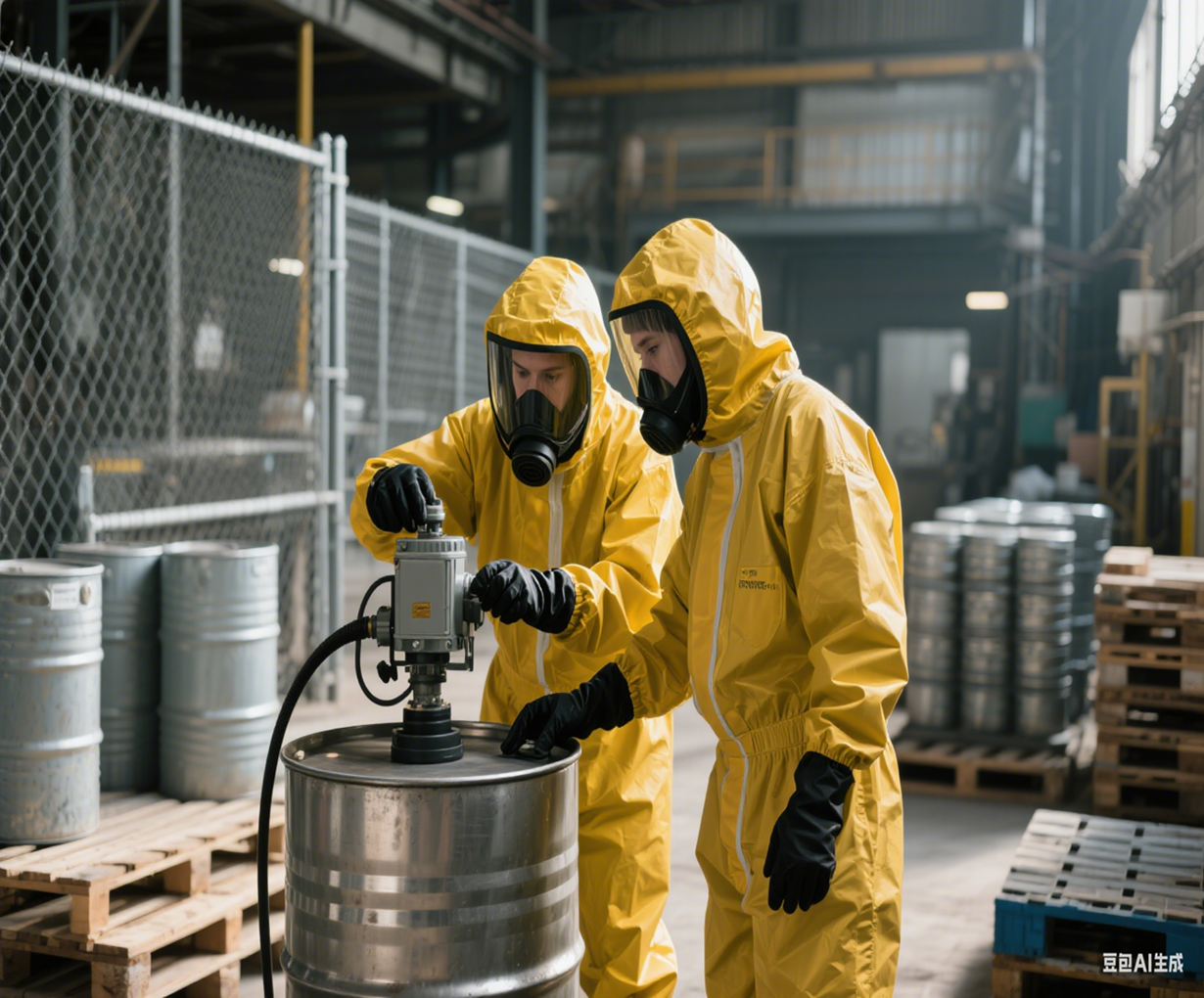
Airtight & Waterproof Zippers: The Unsung Hero of Chemical Protective Clothing
When you think of chemical protective clothing (CPC), the fabric’s resistance to toxins likely comes to mind first. But even the strongest material is compromised if its closure system fails. In high-risk environments—from sulfuric acid splashes to jet fuel exposure—a standard zipper can become the weakest link, turning protective gear into a lethal liability. Here’s why airtight waterproof zippers are the unacknowledged guardians of industrial safety.

The High Cost of Zipper Failure
In chemical manufacturing, labs, or hazardous waste cleanup, workers face aggressive substances:
- Concentrated acids (e.g., sulfuric, hydrochloric)
- Caustic alkalis (e.g., sodium hydroxide)
- Solvents (e.g., acetone, toluene)
- Toxic powders
Ordinary zippers, even those labeled “water-resistant,” fail because:
- Micro-gaps between teeth or tape seams allow chemical permeation.
- Metal components corrode, while plastics swell or crack upon contact with solvents.
- Seam leakage occurs where the zipper attaches to the garment fabric3.
A single breach risks severe burns, systemic poisoning, or suit disintegration—making zipper integrity non-negotiable for OSHA 1910.132 compliance.
Engineering the Invisible Barrier: How Airtight Zippers Work
True airtight waterproof zippers rely on multi-layer defense:
- Corrosion-Resistant Materials:
- Teeth and sliders use PVDF, PPS, or TPU-coated alloys that resist swelling and degradation from chemicals.
- Unlike PFAS-dependent coatings (banned in California by 2025), modern zippers use eco-safe polymer laminates.
- Sealed Construction:
- Internal thermoplastic tape fuses behind the teeth when closed, creating a monolithic barrier against liquids/gases.
- Welded tape-to-fabric seams prevent leaks at attachment points—surpassing stitched alternatives.
- Rigorous Certifications:
- Tested to EN 13982-1 (Type 1 gas-tight suits), EN 13034 (Type 6 liquid-tight), and ASTM F903 for penetration resistance.
Critical Applications Where Airtight Zippers Save Lives
These zippers are essential for:
- Level A Gas-Tight Suits: Absolute vapor barrier in IDLH (Immediately Dangerous to Life/Health) atmospheres.
- Liquid Splash Protection (Level B/C): Blocking ingress during chemical transfers or spill response.
- Decontamination Zones: Preventing contaminants from escaping sealed environments.
⚠️ Case in Point: The AIRTEC™ chemical splash suit—certified to ISO 6530 and ASTM F903—relies on hermetic zippers to shield wearers from aviation fuel and sodium hydroxide.
Choosing the Right Zipper: 5 Factors Beyond “Waterproof”
Not all waterproof zippers meet chemical demands. Prioritize:
- Chemical Compatibility:
- Demand manufacturer resistance charts for specific chemicals (e.g., HCl, NaOH)59.
- Third-Party Certification:
- Verify compliance with EN, ASTM, or ISO standards.
- Seam Integrity:
- Welded > stitched seams for gas/liquid tightness.
- Durability:
- Test zipper strength after 100+ open/close cycles and abrasion exposure.
- Environmental Safety:
- Opt for PFAS-free designs (e.g., micro-textured surfaces mimicking lotus leaves).
The Future: Smart Seals and Sustainable Materials
Innovations are emerging:
- Self-Healing Polymers: Automatically seal micro-tears during chemical exposure.
- Biodegradable TPU: Reducing waste without sacrificing resistance.
- Integrated Sensors: Alert wearers to zipper integrity breaches in real-time.
